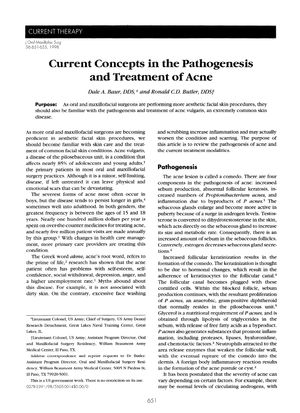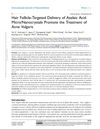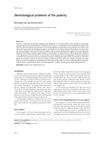Current Concepts in the Pathogenesis and Treatment of Acne
May 1998
in “
Journal of Oral and Maxillofacial Surgery
”
acne vulgaris sebum production follicular keratosis Propionibacterium acnes inflammation benzoyl peroxide tretinoin topical antibiotics oral antibiotics isotretinoin teratogenicity hormonal treatments oral contraceptives antiandrogens spironolactone blood lipids liver function Accutane Retin-A birth control pills

TLDR Acne is caused by increased sebum, abnormal skin shedding, bacteria, and inflammation, not dirt; treatments vary from creams to antibiotics or isotretinoin, with severe cases needing a dermatologist's care.
The 1998 document outlines that acne vulgaris, affecting 85% of adolescents and young adults, is caused by increased sebum production, abnormal follicular keratosis, proliferation of Propionibacterium acnes, and inflammation, and is not due to dirty skin. Treatment varies by acne type: non-inflammatory acne is treated with benzoyl peroxide and possibly tretinoin, while inflammatory acne may require topical antibiotics, and severe cases (Type III and IV) may need oral antibiotics or isotretinoin, the latter being highly effective but with significant side effects including teratogenicity. Hormonal treatments are an option for women with severe resistant acne, with oral contraceptives and antiandrogens like spironolactone available, though the latter is less used due to side effects. Isotretinoin treatment requires a pregnancy test, contraception, and regular monitoring of blood lipids and liver function. The document recommends that oral and maxillofacial surgeons be knowledgeable about acne treatments and that severe cases should be referred to a dermatologist.





